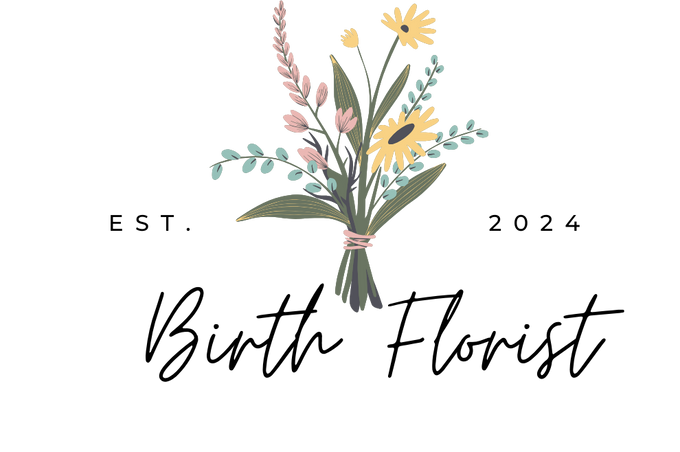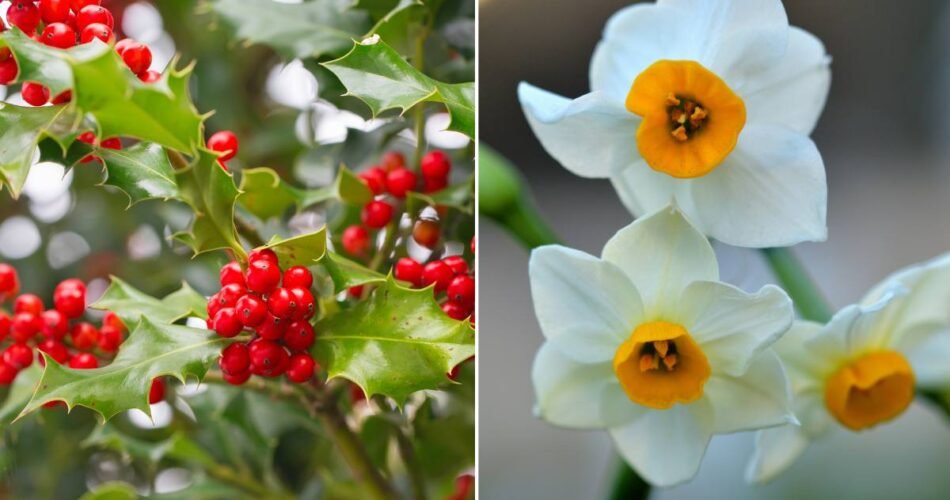What are the December birth flowers?
December’s chill brings with it two contrasting birth flowers: the Narcissus and the Holly. Narcissus, particularly the paperwhite variety, symbolizes rebirth and new beginnings, reflecting the hope and renewal that comes with the end of the year. Holly, with its vibrant red berries and deep green leaves, represents protection and eternal life, embodying the festive spirit of December.
In this blog post, we will explore the world of birth month flowers, explore their meanings, origins, and interesting facts. We will also discover how these flowers inspire art, creativity, and thoughtful gift ideas. So, let’s embark on this journey and uncover the beauty and meaning of December birth month flowers.
Related Post: Birth Flowers for all 12 months
History & Origin of Narcissus
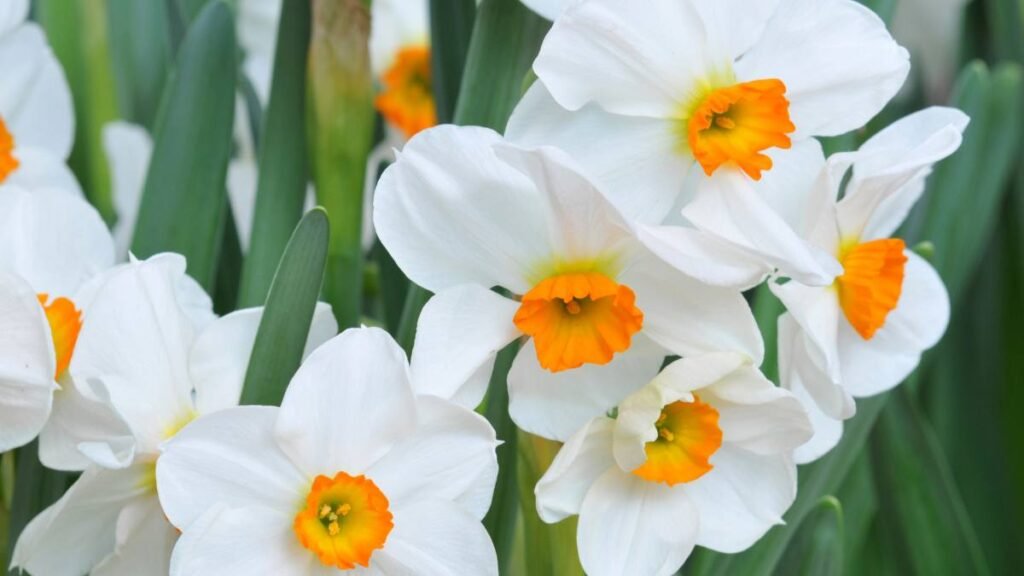
The Narcissus flower, with its scientific genus name Narcissus, has a rich history that intertwines with Greek mythology. The name is derived from the story of Narcissus, a young man who fell in love with his reflection. This tale symbolizes self-love and admiration, which is echoed in the flower’s association with rebirth and new beginnings.
Narcissus flowers, particularly paperwhites, are commonly associated with December due to their ability to bloom indoors in the winter months, bringing a touch of spring’s promise to the colder season. Their bright, star-shaped flowers stand as a beacon of light during the shortest days of the year, symbolizing hope and the joy of life’s continuous cycle.
What does Narcissus mean?
Narcissus flowers, particularly the paperwhite variety associated with December, carry significant symbolism:
- Rebirth and New Beginnings: Narcissus flowers are often seen as symbols of rebirth and new beginnings, making them fitting for the new year.
- Self-Admiration: Echoing the Greek myth of Narcissus, these flowers can also represent self-love and vanity.
- Hope: The bright blooms of the Narcissus in winter convey a message of hope and the anticipation of joy and happiness.
Different colors of Narcissus also have specific meanings:
- White Narcissus (Paperwhites): Purity, innocence, and simplicity.
- Yellow Narcissus: Cheerfulness and joy, bringing a touch of sunshine to the darker months.


How to care for Narcissus
Caring for Narcissus, especially the indoor-blooming paperwhites common in December, involves some simple steps:
- Sunlight: Narcissus plants thrive in bright, indirect light. If growing indoors, a sunny windowsill is ideal.
- Soil: For indoor Narcissus, use well-draining potting soil in a container with drainage holes to prevent waterlogging.
- Watering: Keep the soil consistently moist but not waterlogged. Water when the top inch of soil feels dry to the touch.
- Forcing Bulbs: Paperwhites are popular for “forcing” indoors during winter. Plant the bulbs in soil or place them in a shallow dish with water and pebbles, ensuring only the roots are submerged. The bulbs will typically bloom within 4-6 weeks of planting.
- Aftercare: Once Narcissus blooms have faded, continue to water the foliage until it dies back naturally. This allows the bulb to store energy for the next growing season.
Interesting or less known facts about Narcissus
- Ancient Remedies: Narcissus bulbs have been used in traditional medicine for their healing properties, particularly in treating joint pain and as a natural wound healer.
- Poetic Inspiration: The Narcissus flower has inspired poets and writers for centuries, symbolizing both beauty and the peril of self-obsession, as reflected in the myth of Narcissus.
- National Flower: The Narcissus, particularly the wild varieties, is considered the national flower of Wales, celebrated on St. David’s Day each March.
- Alkaloid Presence: Narcissus plants contain alkaloids, which have been researched for their potential in Alzheimer’s disease treatment due to their ability to inhibit acetylcholinesterase.
History & Origin of Holly
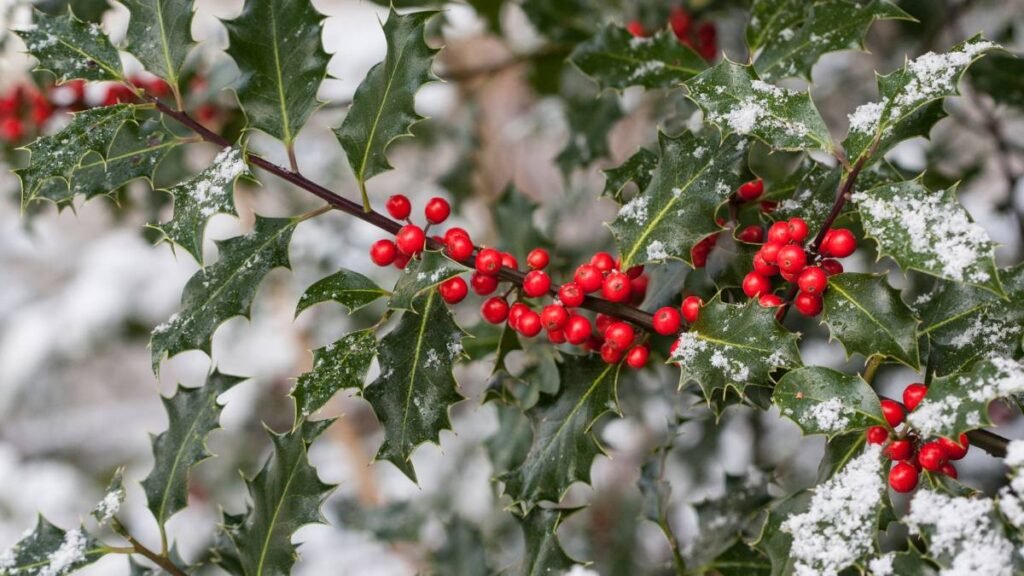
Holly (Ilex), with its glossy green leaves and bright red berries, has deep roots in cultural and religious traditions around the world. Its association with December largely stems from its significance in Christmas and winter solstice celebrations, symbolizing everlasting life, protection, and goodwill.
The use of Holly as a decorative and symbolic plant during winter dates back to Druids, who believed Holly brought protection and good luck. The Romans also used Holly in their Saturnalia festival, a precursor to Christmas celebrations. In Christianity, Holly is associated with Jesus Christ’s crown of thorns, with the red berries symbolizing his blood, making it a poignant symbol for December’s religious observances.
What does Holly mean?
Holly is imbued with rich symbolism, particularly in the context of December and winter celebrations:
- Protection and Good Fortune: Holly is believed to offer protection from evil spirits and bad luck, a tradition that dates back to Druidic beliefs.
- Everlasting Life: The evergreen nature of Holly symbolizes immortality and eternal life, resonating with themes of renewal and resilience during the winter months.
- Domestic Happiness: Holly is also a symbol of domestic happiness and a peaceful home, making it a welcome addition to holiday decor.
How to care for Holly
Caring for Holly plants (Ilex spp.) involves some basic gardening knowledge and practices:
- Sunlight: Holly plants prefer full sun to partial shade. The amount of sunlight can affect the production of berries, with more sun leading to more berries.
- Soil: They thrive in well-drained, slightly acidic soil. Adding organic matter can help improve soil conditions and support healthy growth.
- Watering: Water Holly plants regularly, especially during dry spells and in the first few years after planting, to establish a strong root system. Mature plants are relatively drought-tolerant.
- Pruning: Prune Holly in winter or early spring to maintain shape and encourage bushier growth. This is also the best time to cut branches for holiday decorations.
- Fertilization: Apply a balanced fertilizer in the spring to promote healthy foliage and berry production.
Interesting or less known facts about Holly
- Dioecious Plants: Holly plants are dioecious, meaning male and female flowers grow on separate plants. For berries to form, both male and female plants must be grown near each other.
- Ancient Symbolism: Holly was considered sacred by the Romans, who sent holly wreaths as gifts during Saturnalia, the festival that inspired many Christmas traditions.
- Varietal Diversity: There are over 400 species of Holly, ranging from small bushes to large trees, and not all have the spiky leaves commonly associated with Christmas Holly.
- Medicinal Uses: Historically, parts of the Holly plant were used in folk medicine to treat fever, cough, and other ailments, although modern use is not recommended due to toxicity.
December Birth Flower Comparison
| Month | Birth Flower | Characteristics | Symbolism |
|---|---|---|---|
| December | Narcissus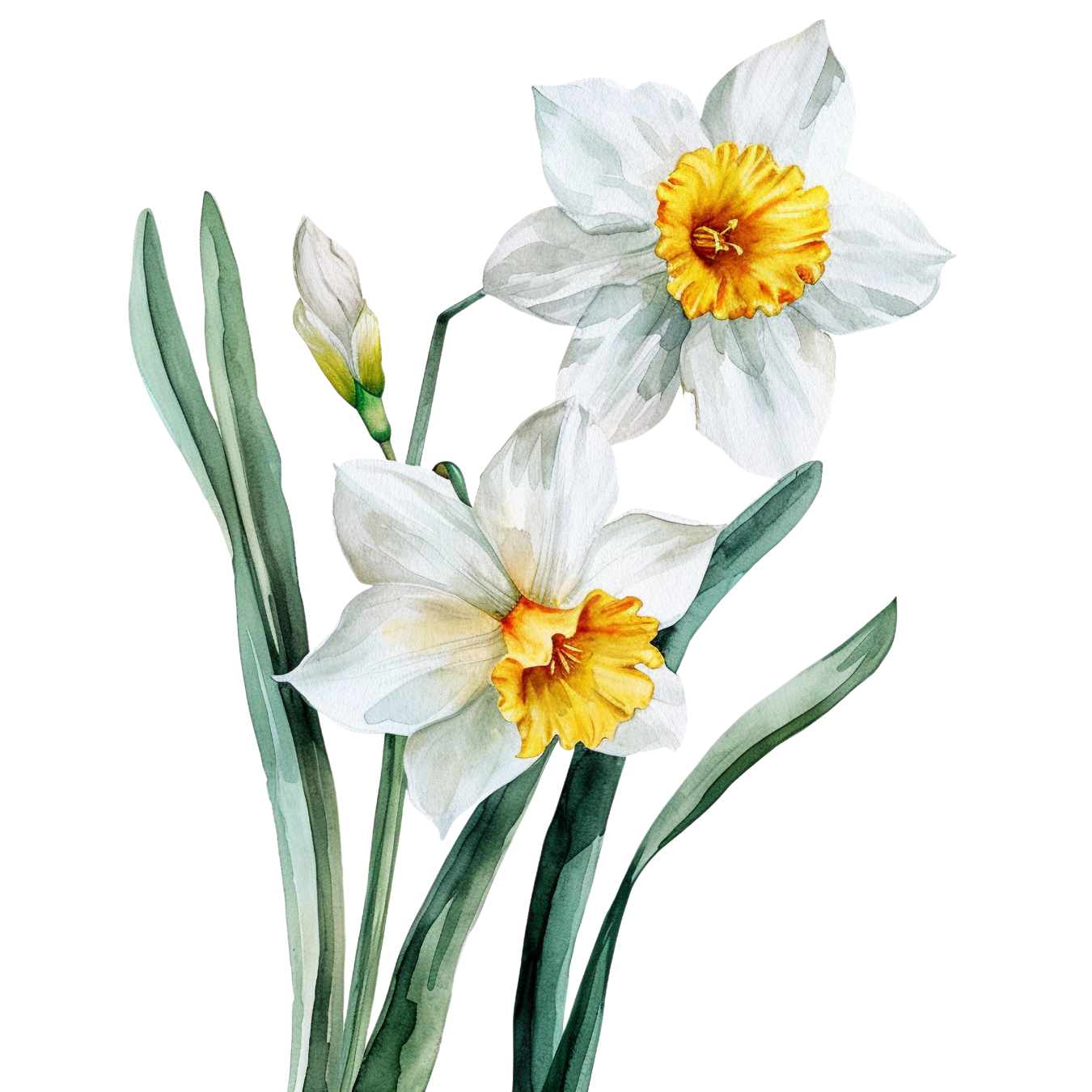 | Typically white or yellow, cup-shaped center | Hope, wealth, self-admiration |
Holly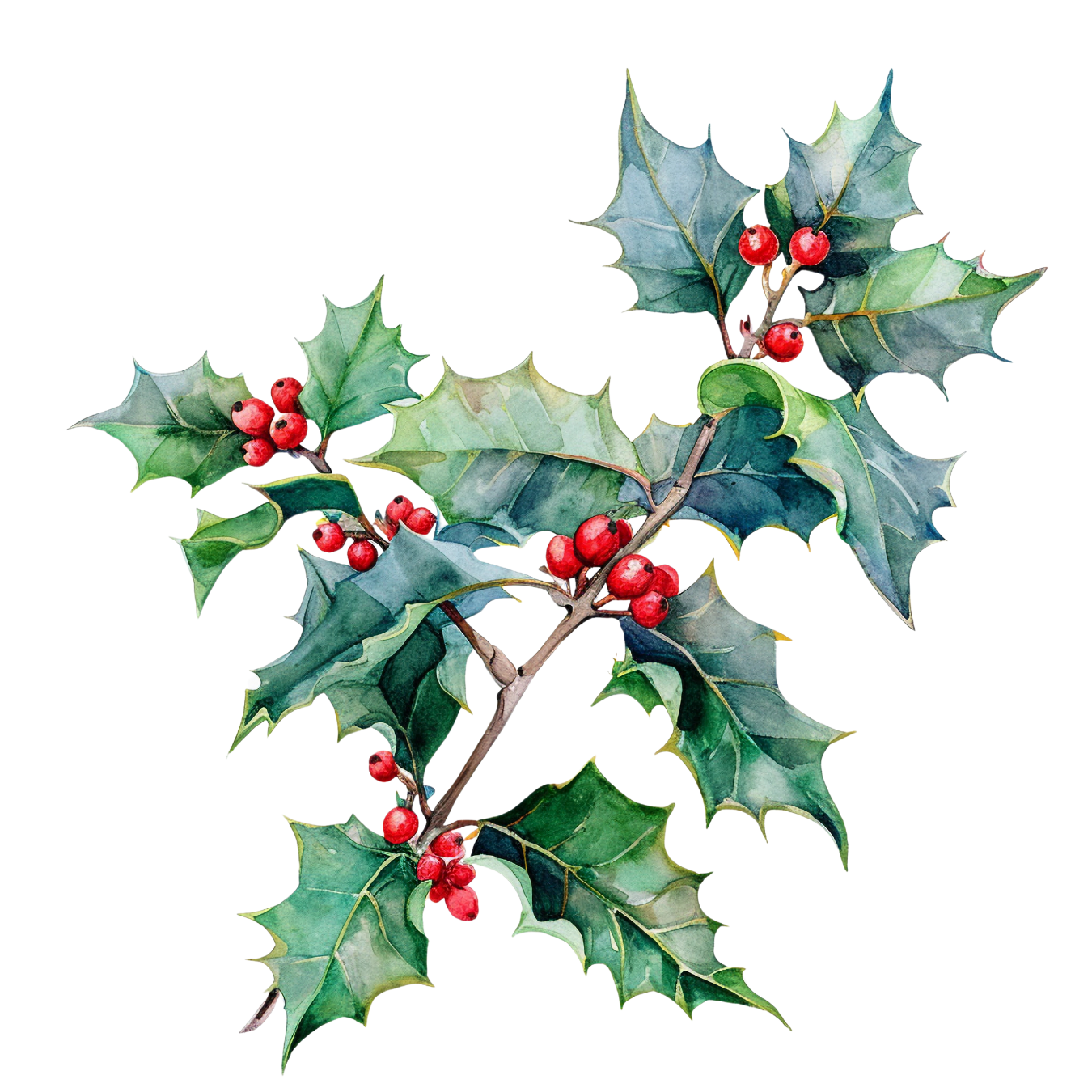 | Dark green leaves, bright red berries | Protection, defense, good fortune |
What are the popular December birth flower gifts?
Narcissus and Holly offer a range of festive and meaningful gift options for December:
- Potted Narcissus: Paperwhite Narcissus bulbs, known for their ability to bloom indoors, make a delightful gift, bringing a touch of spring to the winter months.
- Holly Decorations: Holly branches, wreaths, or garlands are popular gifts for their festive appearance and symbolic protection, perfect for adorning homes during the holiday season.
- Floral Arrangements: Combining the delicate blooms of Narcissus with the rich greenery and red berries of Holly creates a beautiful and symbolic bouquet that captures the essence of December.
- Themed Merchandise: Items featuring Narcissus or Holly motifs, such as candles, stationery, or ornaments, make thoughtful gifts that celebrate the birth flowers of December.
Here are some more gift ideas featuring December’s birth flowers to explore.
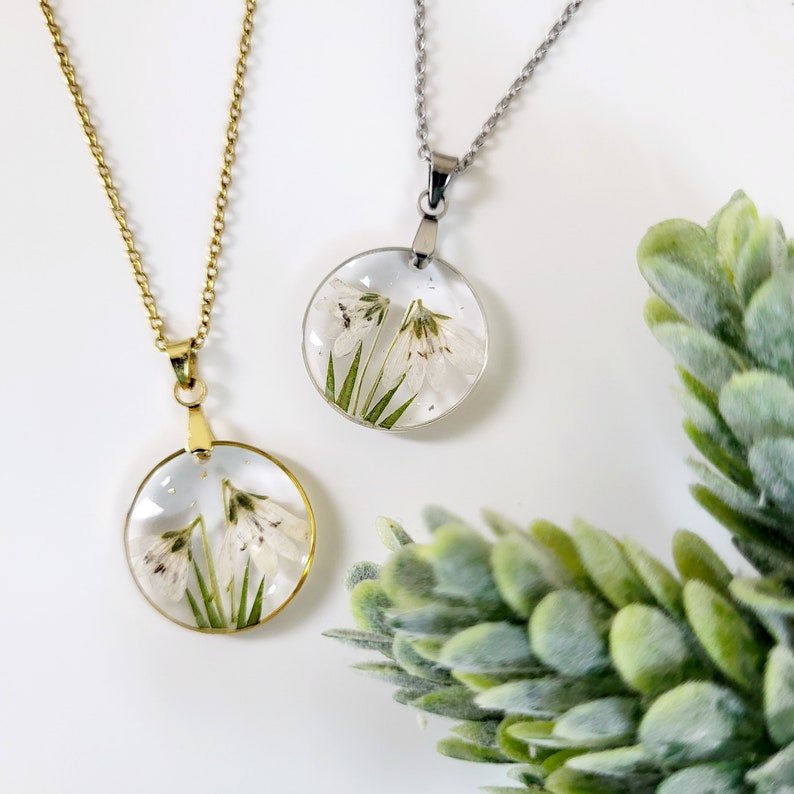

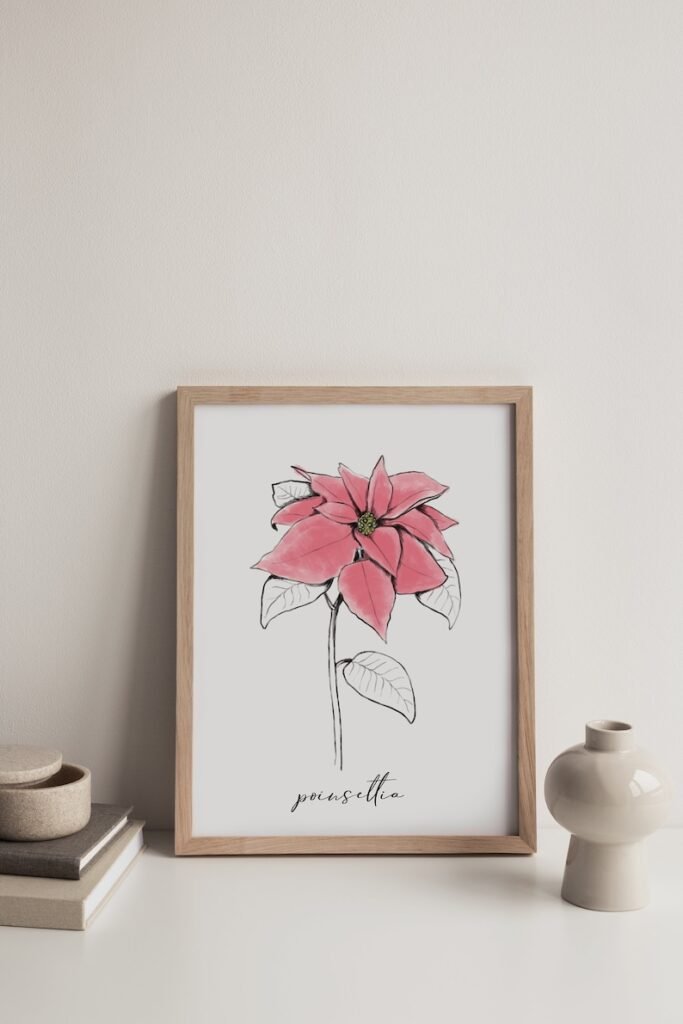
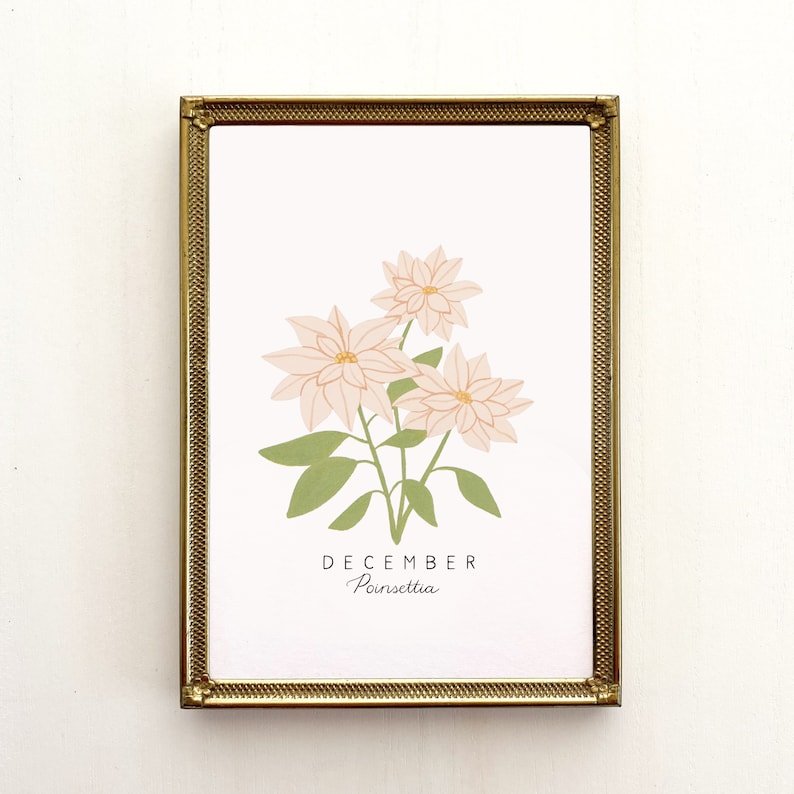
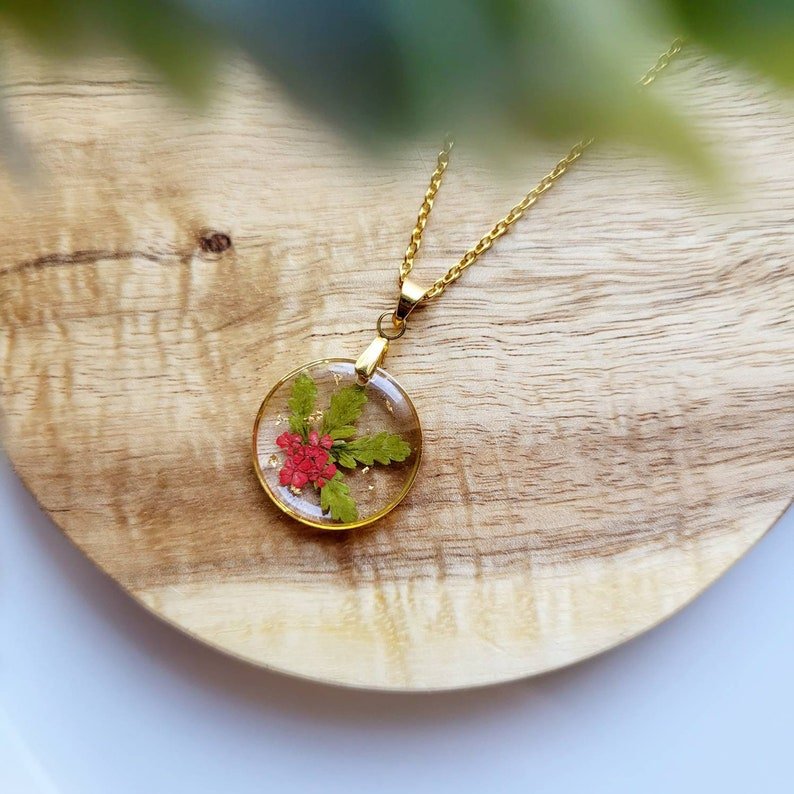
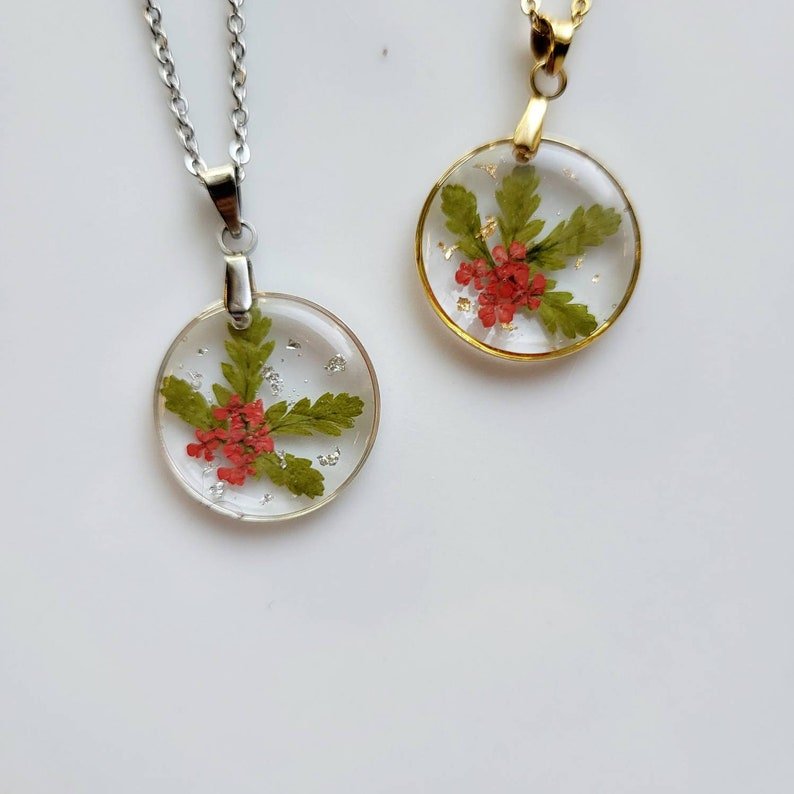






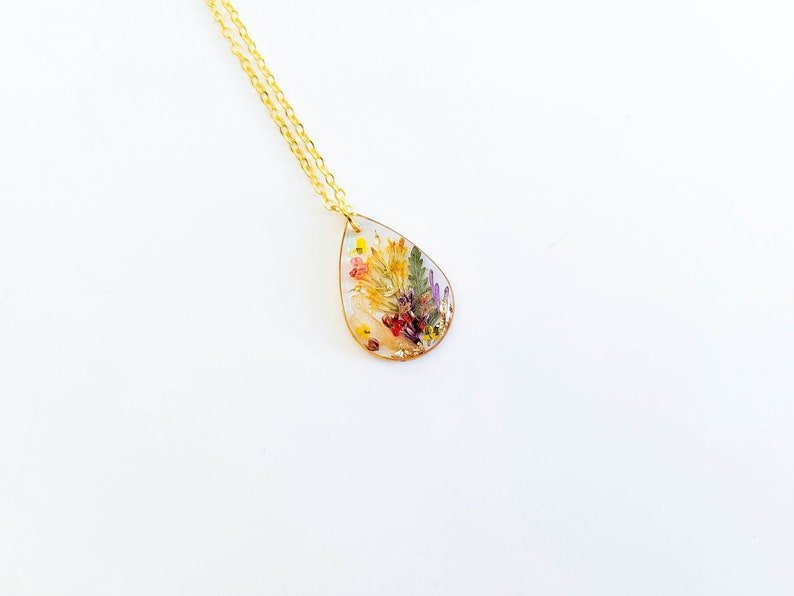
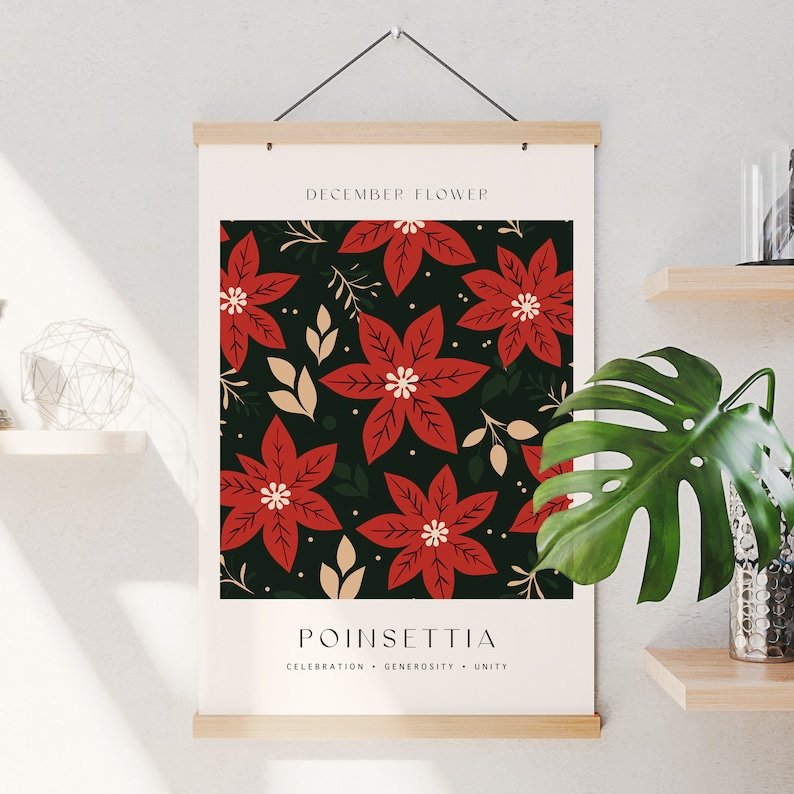
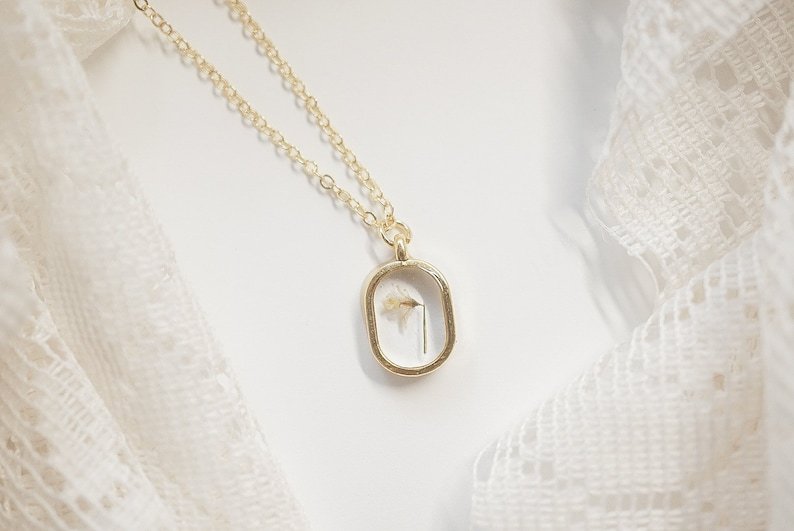

What are some artistic or creative applications of December birth flower?
Narcissus and Holly can be beautifully incorporated into various artistic and creative projects:
- Floral Crafts: Create holiday decorations such as wreaths, centerpieces, or ornaments using Holly’s distinctive green leaves and red berries, perhaps even weaving in some delicate Narcissus blooms.
- Botanical Illustrations: The distinct shapes and colors of Narcissus and Holly lend themselves well to detailed botanical illustrations, perfect for holiday cards or wall art.
- Fashion Accessories: Design or select accessories like brooches, pendants, or scarves featuring Narcissus or Holly motifs to add a festive touch to holiday attire.
- Tattoo Art: Tattoos of Narcissus can symbolize rebirth and new beginnings, while Holly tattoos might represent protection and eternal life, offering deeply personal meanings for those born in December.
Conclusion
The December birth flowers, Narcissus and Holly, offer a harmonious blend of beauty, symbolism, and tradition. Narcissus, with its promise of renewal, and Holly, with its protective and festive spirit, perfectly encapsulate the essence of December. Whether celebrated through gardening, floral arrangements, artistic endeavors, or holiday decor, these flowers encourage us to reflect on the past year and look forward to the new beginnings that lie ahead.
10 FAQs
What are the birth flowers for December?
Narcissus and Holly.
What do Narcissus flowers symbolize?
Rebirth, new beginnings, and self-love.
What is the meaning behind Holly?
Protection, eternal life, and goodwill.
Can Narcissus grow indoors?
Yes, especially varieties like Paperwhites, which are popular for indoor forcing.
Are Holly berries edible?
No, Holly berries are toxic to humans and pets.
How long do Narcissus flowers last?
When cared for properly, Narcissus blooms can last up to 6 weeks.
Do all Holly plants have spiky leaves?
No, some Holly species have smooth-edged leaves.
Can I plant Narcissus bulbs outside?
Yes, Narcissus bulbs can be planted outdoors in the fall for spring blooms.
How can I use Holly in holiday decor without harming the plant?
Trim branches sparingly and ensure the plant is healthy and well-cared-for.
Are there different colors of Narcissus?
Yes, Narcissus flowers come in shades of white, yellow, and orange.
